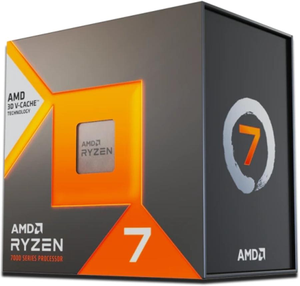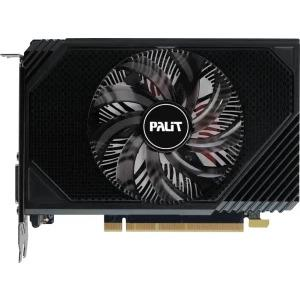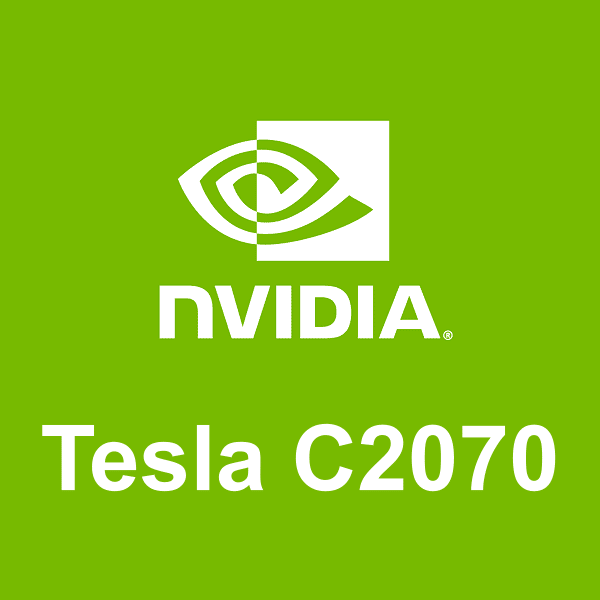General Tasks bottleneck calculator
AMD A4-7300 and NVIDIA Tesla C2070
General Tasks
2560 × 1440
1 monitor
1. Select purpose
Currently selected:
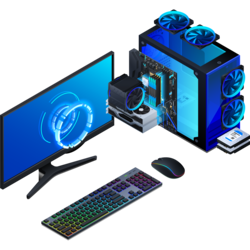
General Tasks
2. Select processor
Currently selected:
AMD A4-7300
3. Select graphic card
Currently selected:
NVIDIA Tesla C2070
4. Select resolution
Currently selected:
2560 × 1440 resolution
(1 monitor)
Calculation result
Bottleneck percentage
The AMD A4-7300 may serve as a bottleneck for the NVIDIA Tesla C2070 in the General Tasks with 2560 × 1440 and 1 monitor. Although the NVIDIA Tesla C2070 is engineered to manage heavy graphical tasks, the AMD A4-7300 might lack the processing power needed to fully unlock the NVIDIA Tesla C2070 capabilities. This imbalance may inhibit the overall efficiency of your system, slowing down processing and possibly compromising graphical fidelity. For a more harmonious hardware setup, upgrading to a high-performing processor that can meet the demands of current software and games is advised.
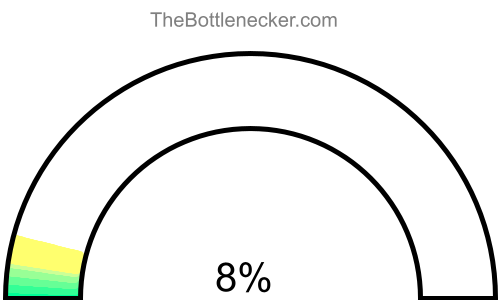
In a configuration featuring the AMD A4-7300 and NVIDIA Tesla C2070, with a screen resolution of 2560 × 1440 and 1 monitor, the system experiences a 7.6% bottleneck for General Tasks.
Processor and graphic card utilizations
In a computing setup featuring the AMD A4-7300 and NVIDIA Tesla C2070, under the context of General Tasks with a screen resolution of 2560 × 1440 and 1 monitor, the processor is expected to have an utilization rate of 82.9%, while the graphics card is projected to be utilized at 69.5%.
It's crucial to understand that these figures signify theoretical maximums based on typical CPU-to-GPU workload distribution ratios for certain tasks or gaming experiences. Achieving these high levels of utilization in real-world settings can be a challenging endeavor.

Playability
- Playable
- Frames per second
-
A game is considered "playable" if it can consistently run at 60 FPS on high settings. This ensures a smooth and visually appealing gaming experience free from lags or stutters.
Heatmap of bottleneck
In gaming scenarios, your NVIDIA Tesla C2070 might not attain its full performance potential due to a lack of optimal utilization. This happens when the AMD A4-7300 fails to handle and transmit data to the NVIDIA Tesla C2070 at an adequate speed. As a result, the AMD A4-7300 will be operating at its maximum capacity, while the NVIDIA Tesla C2070 remains underutilized.
When it comes to bottlenecks, a processor bottleneck is generally viewed as more detrimental than a graphics card bottleneck. In cases of a processor bottleneck, the AMD A4-7300 capacity reaches its limits, which may adversely affect other applications running concurrently. This situation can result in diminished responsiveness and multi-tasking capabilities.
Moreover, due to the processor bottleneck, the system might not leverage the full performance capabilities of the NVIDIA Tesla C2070. Consequently, there could be restrictions in graphical rendering, frame rates, and the overall gaming experience.
To visualize these bottlenecks, consider examining our heatmap. On this heatmap, the X-axis represents the CPU Score, while the Y-axis denotes the GPU Score. A quick glance at this heatmap can offer invaluable insights into potential bottlenecks within various system configurations.

By correlating your AMD A4-7300 CPU Score and NVIDIA Tesla C2070 GPU Score on the heatmap, you can acquire a more comprehensive understanding of how these components interact and where the bottlenecks might occur. Making well-informed hardware choices based on this heatmap analysis can lead to a more balanced and efficient computing setup for your specific needs.
Bottleneck solutions
Replace processor
When the processor becomes the system's bottleneck, upgrading it is often the most straightforward way to improve performance. Opting for a faster processor with more cores and higher clock speeds can effectively minimize or even eliminate the bottleneck, making it easier for your graphics card to perform to its maximum capability.
- AMD Athlon II X4 559 Full details
- AMD A8-5500 Full details
- AMD FX-4100 Full details
- AMD A8-5500B Full details
- Intel Core i5-680 Full details
- AMD Athlon X4 750 Full details
- AMD Athlon X4 740 Full details
- AMD Phenom II X4 965 Full details
- AMD Phenom II X4 B60 Full details
- Intel Core i5-760 Full details
- Intel Celeron G5900 Full details
- AMD FX-4130 Full details
- Intel Celeron J4115 Full details
- Intel Core2 Extreme X9770 Full details
- AMD Phenom II X4 B65 Full details
- Intel Pentium G4520 Full details
- AMD A10-5700 Full details
- AMD Phenom II X4 970 Full details
- Intel Pentium G4500 Full details
- Intel Celeron G5905 Full details
- AMD A8-6500 Full details
- Intel Core2 Quad Q9650 Full details
- Intel Celeron G3950 Full details
- Intel Core2 Quad Q9550 Full details
- Intel Pentium G4400T Full details
- AMD Phenom II X4 960T Full details
- AMD Phenom II X4 940 Full details
- AMD Athlon II X4 645 Full details
- Intel Celeron G3920 Full details
- AMD A8-3850 Full details
- AMD Phenom II X4 850 Full details
- AMD Phenom II X4 B50 Full details
- Intel Core i3-3245 Full details
- AMD Phenom II X4 945 Full details
- Intel Core i5-660 Full details
- Intel Xeon E5-2407 Full details
- Intel Xeon E5607 Full details
- Intel Xeon E5530 Full details
- Intel Xeon E5-2603 v2 Full details
- Intel Xeon X5482 Full details
- Intel Xeon X3440 Full details
- Intel Xeon E5540 Full details
- Intel Xeon E5-2609 Full details
- Intel Xeon X5365 Full details
- Intel Xeon E5-2403 Full details
- Intel Xeon X3363 Full details
- Intel Xeon E5606 Full details
- Intel Xeon E5440 Full details
- Intel Xeon X5450 Full details
- Intel Xeon X3360 Full details

Impact of Changing Screen Resolution
Interestingly, if you're facing a processor bottleneck, altering the screen resolution may have a counterintuitive impact. Elevating the screen resolution will primarily stress the graphics card, thereby reducing the proportion of work that the processor needs to do in certain tasks. This makes it less likely that the processor will max out, though it does not replace the benefits of a processor upgrade for a balanced system.
Read moreReplace graphic cards
If the processor is causing the bottleneck, replacing the graphic card isn't generally recommended unless you're also planning to upgrade the processor. Downgrading your graphics card to better match the processor might alleviate the bottleneck, but it often results in a decrease in overall system performance, especially in graphics-heavy tasks like gaming or 3D rendering.
- AMD Radeon R9 360 Full details
- AMD Radeon HD 6970 Full details
- AMD Radeon R7 260 Full details
- AMD Radeon HD 6990 Full details
- AMD Radeon RX 550 Full details
- AMD Radeon HD 6950 Full details
- NVIDIA GeForce GTX 465 Full details
- AMD Radeon HD 8950 Full details
- NVIDIA GeForce GTX 560 Full details
- NVIDIA GeForce GT 1030 Full details
- NVIDIA GeForce GTX 650 Ti Full details
- AMD Radeon RX 550X Full details
- NVIDIA GeForce GTX 460 Full details
- AMD Radeon HD 5970 Full details
- AMD Radeon RX Vega 11 Full details
- NVIDIA GeForce GTX 745 Full details
- AMD Radeon HD 7770 Full details
- AMD Radeon HD 5870 Full details
- AMD Radeon HD 6870 Full details
- AMD Radeon R9 350 Full details
- NVIDIA GeForce GT 645 Full details
- NVIDIA GeForce GTX 460 SE Full details
- AMD Radeon HD 5850 Full details
- AMD Radeon HD 6850 Full details
- AMD Radeon RX 640 Full details
- AMD Radeon R7 450 Full details
- NVIDIA GeForce GTX 560 SE Full details
- AMD FirePro W4300 Full details
- NVIDIA GRID K280Q Full details
- AMD FirePro M6100 FireGL V Full details
- NVIDIA Quadro K1200 Full details
- AMD FirePro W5000 Full details
- AMD FirePro W5100 Full details
- NVIDIA Quadro 6000 Full details
- NVIDIA Quadro K4000 Full details
- AMD FirePro V9800 Full details
- NVIDIA GRID K2 Full details
- NVIDIA Quadro K5000M Full details
- NVIDIA Quadro K4100M Full details
- AMD FirePro 3D V8800 Full details
- AMD Radeon Pro WX 3100 Full details
- NVIDIA Quadro K620 Full details
- NVIDIA Quadro K3100M Full details
- AMD FirePro V7900 Full details
- AMD FirePro M5100 Full details
- AMD Radeon Pro Full details
- AMD FirePro M6100 Full details
- NVIDIA Quadro 5000M Full details
- NVIDIA Quadro K4000M Full details
- NVIDIA Quadro 5000 Full details

Impact of Changing Screen Resolution
Increasing the screen resolution in this case will demand more from your graphics card and can make the processor's bottleneck less noticeable in some scenarios, but again, it won't entirely solve the underlying problem.
Read moreBottleneck calculator types
Select purpose bottleneck calculator
Before selecting a bottleneck calculator, consider your primary computing tasks. For general activities like web browsing and office work, the calculator evaluates the balance between your CPU and GPU. If you focus on CPU-intensive tasks like video editing or 3D rendering, the tool will highlight processor performance. For GPU-centric tasks such as gaming or graphical rendering, it will assess the efficiency of your graphics card. Choose the appropriate calculator to accurately identify potential system bottlenecks for your specific use-case.
Select game bottleneck calculator
By selecting a game from the list, the calculator will analyze potential bottlenecks specifically tailored to that game's system requirements and graphical demands. This allows you to optimize your setup for a smoother, more responsive gaming experience. Choose the game that aligns with your interests to get the relevant bottleneck analysis.


